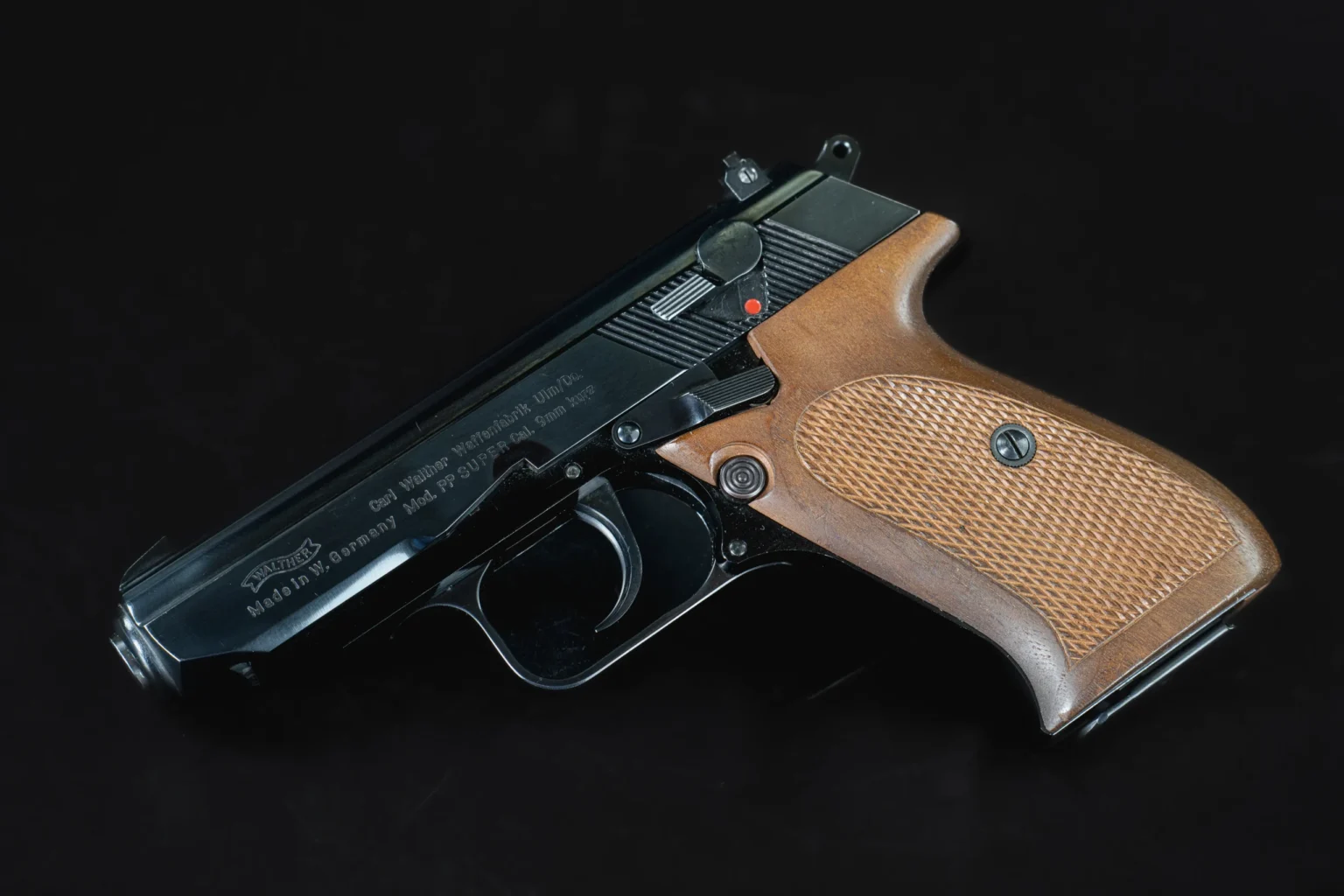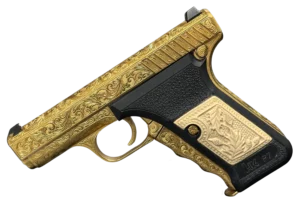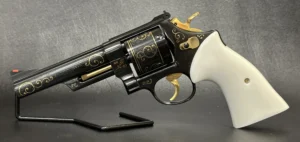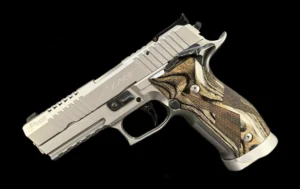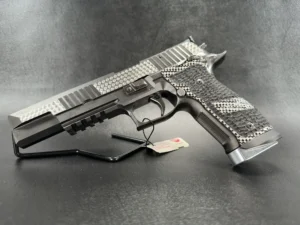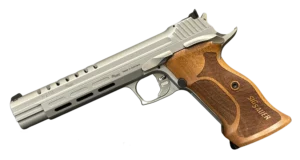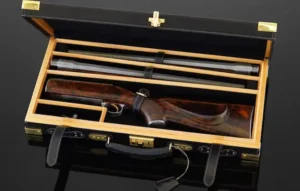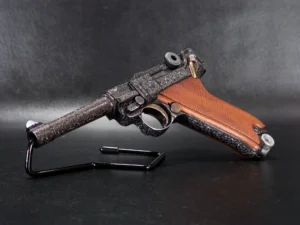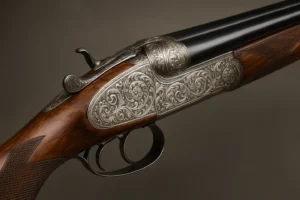Key Takeaways:
- The Walther PP Super was built with a purpose — and it wasn’t mass appeal: This wasn’t a gun for the range junkie or movie hero. It was designed for police work, plain and simple. Reliable, practical, and chambered in a cartridge almost nobody else used, it quietly served its role before fading into obscurity.
- Its biggest strength was also its biggest flaw: The 9x18mm Ultra round gave the PP Super more punch than the older PPK-style pistols, but it also made ammo hard to find and adoption outside Germany nearly impossible. The gun was solid — the round just didn’t catch on.
- It didn’t change the world, but collectors love it anyway: The PP Super might not have revolutionized handgun design, but its rarity, clean lines, and transitional role between revolvers and modern semi-autos give it real collector appeal. If you find one in good condition, hold on to it.
There’s something oddly charming about the Walther PP Super — a pistol that sits at the intersection of fading revolvers and the rise of modern semi-autos. It’s not flashy. It’s not a Bond gun. But for a brief moment in the 1970s, it was Walther’s answer to a particular question: what does law enforcement need in a sidearm?
And then… it disappeared.
But let’s back up.
Born from a Need, Not a Trend
The Walther PP Super didn’t make an appearance, despite attempts to make a splash in the commercial market. It wasn’t designed to woo weekend shooters or collectors — at least not at first. It was born out of a practical concern: German police needed something better. Their aging revolvers weren’t cutting it, and the smaller-caliber PP and PPK, while iconic, weren’t exactly what you’d call “authoritative” sidearms.
So, in the early 1970s, Walther got to work. The result? The PP Super — bigger, tougher, and built specifically for law enforcement, chambered in a cartridge almost no one else was using.
Because, of course, it was.
The 9x18mm Ultra: Powerful, Obscure, and a Bit of a Hiccup
Now, let’s talk about that cartridge for a second.
The 9x18mm Ultra had roots going back to World War II. It was meant to split the difference between the .380 ACP and the 9mm Luger — packing more punch than the former, without the recoil and pressure of the latter. Sounds smart, right?
Well, kind of.
The issue was that by the time the PP Super hit the scene, the world had largely moved on. NATO had standardized on the 9mm Luger, and nobody — and I mean nobody — was begging for a new semi-automatic in 9×18 mm Ultra. So, while the PP Super was solid on paper, it was running uphill from the start.
Still, as a piece of engineering? It’s classic Walther: clever, well-built, and unapologetically German.
From PP to PP Super: What Changed?
If you’re familiar with the original PP and PPK, you already know their charm — compact, sleek, reliable. However, it is also a bit underpowered for serious duty use.
The PP Super upped the ante.
It was bigger and bolder, with a full steel frame, fixed barrel, and a blowback action that handled the snappy 9×18 Ultra round without flinching. The magazine held eight rounds — not a groundbreaking feature, but an improvement from earlier models. It retained the traditional Walther double-action/single-action trigger system, added a decocker, and incorporated practical features such as a manual safety and easy takedown.
This was a gun built for work, not flash.
In the Hands of German Police
For a while, the PP Super did precisely what it was meant to do: sit on the hips of West German police officers and do its job quietly.
There was no big advertising push. No massive military contract. Just a few years of dependable service in the hands of the Polizei. And you know what? It worked. Officers appreciated the accuracy, handling, and decent ergonomics of a service pistol of that era.
But again — that 9x18mm Ultra. It was a niche round in a world that didn’t have room for it. As law enforcement moved toward more standardized calibers, the PP Super quietly faded from use.
By the early 1980s, production had stopped.
Design Notes That Still Impress
If you ever get your hands on a PP Super, one of the first things you’ll notice is how “right” it feels. It’s got that solid, all-metal confidence — the kind that reminds you why steel-frame pistols will never go out of style in collector circles.
Here’s a quick breakdown of what made the PP Super tick:
- All-metal construction – heavy enough to soak up recoil, but still well-balanced.
- Fixed barrel + blowback system – great for accuracy.
- Double/single-action trigger – smooth pull, solid reset.
- Manual safety and decocker – very police-friendly.
- Quick, tool-free disassembly – maintenance was a breeze.
Ergonomics was a significant improvement over earlier models. The grip angle was comfortable, and the checkering gave a good feel without being aggressive. It wasn’t precisely a range toy — it was still a duty pistol — but it handled well.
Safety and Simplicity
One thing Walther’s always done well: making guns that are both easy to use and hard to screw up.
The PP Super was no exception. The decocker added a nice layer of safety, especially for officers who weren’t running thousands of rounds a year. The blowback system was straightforward, and the lack of complex internals meant fewer things that could go wrong.
It didn’t try to reinvent the wheel. It ensured the wheel rolled smoothly.
So… Why Didn’t It Catch On?
Honestly? Timing and ammo.
The 9x18mm Ultra never gained significant traction. That alone made the PP Super a tough sell outside of Germany. Other countries were already invested in the 9mm Luger ecosystem — more guns, more ammo, more parts. The PP Super was, in a weird way, too unique to succeed.
And let’s not forget: by the 1980s, the polymer revolution was already knocking. Lighter guns with bigger capacities were on the horizon. Glock was coming. SIG was climbing. Beretta had just landed the M9 contract in the U.S.
The PP Super was yesterday’s gun, even though it hadn’t had much of a day.
Collectibility: The PP Super’s Second Life
Here’s where things get interesting.
Since the PP Super didn’t last long, production numbers were relatively low. That scarcity, combined with its unique chambering and clean design, has turned it into a bit of a collector’s darling, especially among Walther aficionados.
If you’re lucky enough to find one with original grips, documentation, or even a box, you’re sitting on a gem.
Some collectors also take great interest in serial number variations and German proof marks. Others chase after specific police-issue versions or minty examples from the factory in Ulm. The market varies, but when one pops up in excellent condition, it rarely lasts long.
And yes — good luck finding 9x18mm Ultra on the shelf at your local gun shop. But hey, that’s part of the charm.
The Legacy That Lingers
Even though the PP Super’s story is short, its impact lingers, especially when considering how Walther evolved.
It helped set the stage for later models, such as the P5 and the P88, which incorporated more modern features and chambered a wider range of universal calibers. It marked a turning point — that moment when Walther shifted away from the classic PP/PPK silhouette and started pushing into the “next gen” of service pistols.
You can see echoes of the PP Super’s simple utility in many modern handguns. Clean lines. Clear functions. No nonsense.
A Quiet Icon
The PP Super never got the fanfare. It didn’t headline wars or become a silver screen icon. It wasn’t flashy or trendy. But it did what it set out to do: serve the people who needed it, with reliability and grace.
And that — in its understated way — makes it something special.
Final Thoughts
The Walther PP Super isn’t the kind of gun that jumps off the page at first glance. But once you dig into its story, it becomes clear that this is more than just an oddball sidearm. It’s a time capsule — a glimpse into a moment when gunmakers were figuring out what the future would look like and how to balance tradition with progress.
Is it rare? Yeah. Is it collectible? Definitely, but more than anything, the PP Super is a reminder that even the in-between chapters of firearm history are worth reading.
Because sometimes, the pistols that almost made it are the ones that stick with you the longest.
Frequently Asked Questions
It’s a semi-automatic pistol manufactured by Walther in the 1970s, specifically designed for law enforcement use in West Germany. Think of it as the bigger, more serious cousin of the famous Walther PP and PPK — but chambered in a particular round: the 9x18mm Ultra.
Great question — and kind of a head-scratcher in hindsight. The 9x18mm Ultra was designed to offer more stopping power than the .380 ACP but less recoil than the 9mm Luger. It made sense on paper, but in the real world? The cartridge never really caught on, which hurt the PP Super’s chances of widespread adoption.
Yeah, it is. Walther didn’t produce a large number of them, and since it wasn’t heavily exported outside Germany, finding one in good condition — especially with original accessories — can be challenging. That’s also part of why collectors get excited when one shows up.
Pretty well, actually. It’s got a fixed barrel and blowback design, so it’s surprisingly accurate for a service pistol. Recoil is snappy (thanks to that Ultra round), but not unmanageable. The all-steel construction gives it a solid, balanced feel.
Honestly… probably not. Not because it’s unreliable (it’s not), but because the 9x18mm Ultra is tough to find, and there are many more modern options available with better aftermarket support. But for collecting or range nostalgia? Absolutely.


